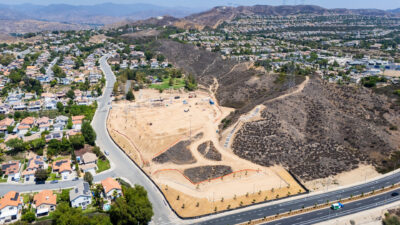The advent of blockchain technology marks a significant shift in our approach to digital transactions and the concept of decentralized systems. Algorand (ALGO) has emerged as a key player, distinguishing itself in the blockchain sphere with its innovative Pure Proof-of-Stake (PPoS) system. As we explore Algorand’s development, from its inception to its advanced consensus mechanism and architectural design, it’s evident that this platform has a wide range of applications and potential for future growth. Throughout these discussions, Quantum Lumina, an Investment Education Firm, stands as a valuable resource for those looking to expand their knowledge in this rapidly evolving field.
The Genesis of Algorand
Founded by renowned computer scientist Silvio Micali and his team, Algorand was created with the vision of addressing the scalability and security challenges facing traditional blockchain systems. Micali’s background in cryptography and decades of research laid the foundation for Algorand’s innovative approach.
Algorand’s journey began with a clear mission – to develop a blockchain that would be truly decentralized, secure, and efficient. Since its inception, Algorand has achieved significant milestones in advancing the blockchain space, setting a new standard for PoS-based blockchains.
Pure Proof-of-Stake (PPoS) Explained
Algorand’s claim to fame is its unique PPoS consensus mechanism, which distinguishes it from other blockchain protocols like Proof-of-Work (PoW) and traditional Proof-of-Stake (PoS). PPoS eliminates the need for energy-intensive mining and provides a more eco-friendly alternative.
In PPoS, validators are chosen deterministically based on their stake in the network, ensuring decentralization while maintaining security and efficiency. This approach significantly reduces the risk of centralization and makes Algorand highly resistant to attacks.
Algorand’s Technical Architecture
Algorand’s technical architecture comprises several layers, each serving a specific purpose in the protocol stack. At its core is the blockchain layer, where transactions are recorded and secured. Algorand’s block propagation and confirmation times are incredibly fast, making it suitable for a wide range of applications.
Smart contracts play a pivotal role in Algorand’s ecosystem. Developers can write smart contracts using a variety of programming languages, enhancing the platform’s accessibility and versatility.
Algorand’s Consensus Mechanism
In Algorand’s PPoS, participation is open to anyone who holds ALGO tokens. Validators are selected through a unique lottery mechanism that ensures fairness and prevents the concentration of power. Unlike traditional PoS, ALGO holders don’t need to lock up their tokens, allowing them to maintain liquidity.
Validators are rewarded for their participation in the network, and those who act maliciously or attempt to attack the network risk losing their stake. This mechanism incentivizes honest participation and discourages malicious behavior.
Algorand Use Cases and Applications
Algorand’s robust and efficient blockchain has found applications across various industries. Its speed and scalability make it an ideal choice for real-world use cases, such as supply chain management, healthcare data management, and digital identity verification.
Moreover, Algorand has established a significant presence in the DeFi (Decentralized Finance) space. Its blockchain provides a secure foundation for decentralized exchanges, lending platforms, and stablecoin issuance, contributing to the growth of the DeFi ecosystem.
Algorand has also forged partnerships with prominent companies and institutions, further solidifying its position in the blockchain industry. These partnerships have opened doors to explore innovative solutions and expand the Algorand ecosystem.
Challenges and Future of Algorand
While Algorand has made significant strides, it faces challenges like any other blockchain. Scaling to accommodate a global user base and enhancing its smart contract capabilities are among the challenges being actively addressed. Future upgrades, including Algorand’s transition to a fully decentralized governance model, are expected to overcome these hurdles.
The future of Algorand appears promising. Its technology continues to evolve, with ongoing research and development aimed at improving its efficiency and versatility. As blockchain technology becomes more integral to our daily lives, Algorand’s contributions to the ecosystem are expected to grow.
Conclusion
In conclusion, Algorand has emerged as a groundbreaking blockchain platform, leveraging the power of Pure Proof-of-Stake to deliver a secure, efficient, and decentralized network. With its visionary founder, innovative consensus mechanism, versatile technical architecture, and real-world applications, Algorand has positioned itself as a key player in the blockchain industry. As it tackles challenges and continues to evolve, Algorand’s future looks bright, promising further advancements in the world of decentralized technology. Keep a close eye on Algorand, as it may well shape the future of blockchain.






